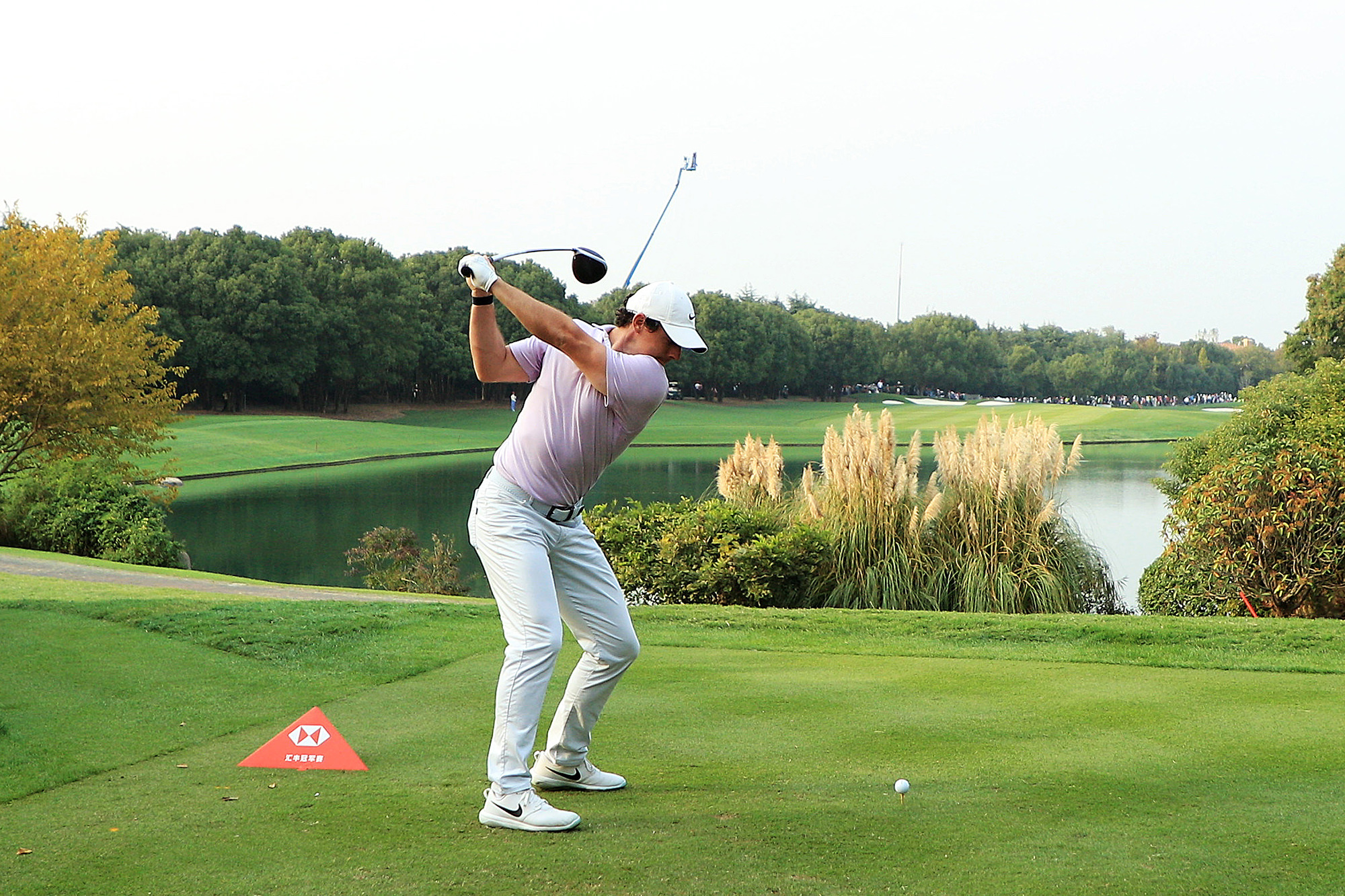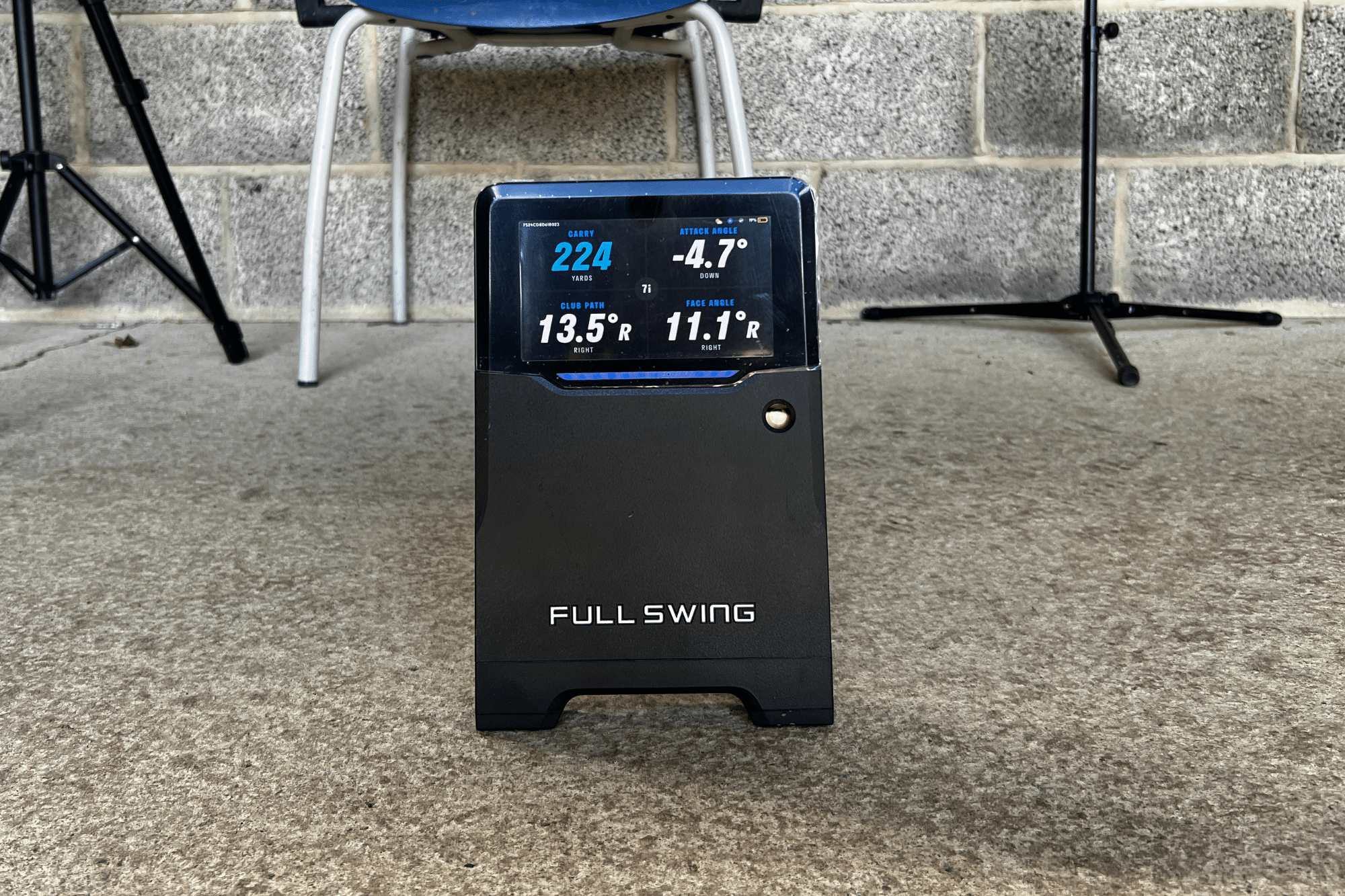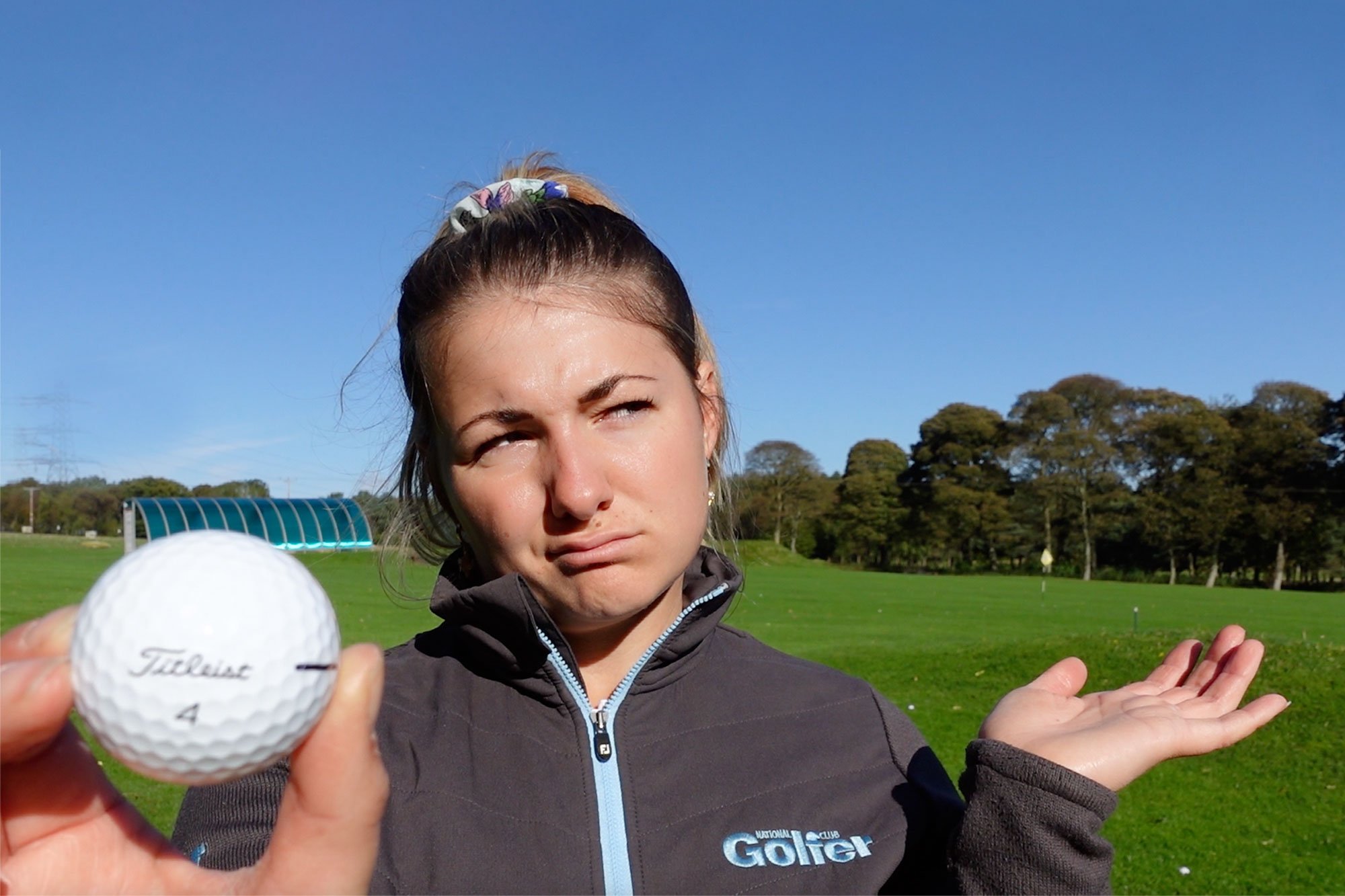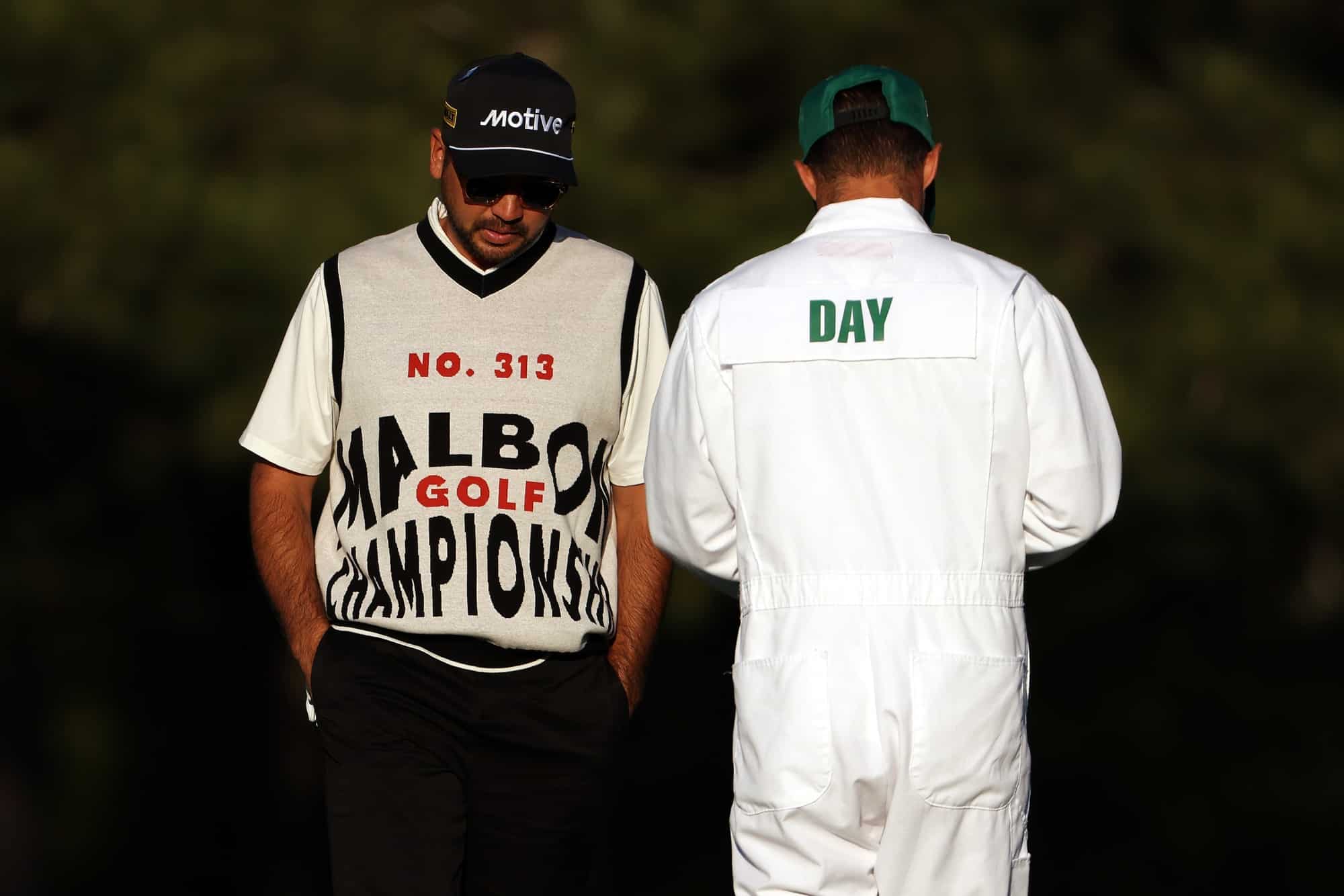
How to solve a problem like the golf ball going too far
Elite players* are hitting their drives too long, too straight and too often. So what is to be done? How do we stop the golf ball going too far?
Easy, let’s roll back the equipment. Let’s bring back smaller heads on drivers and rein in massively forgiving irons.
I’m not sure it’s really the equipment, though. I think it’s more the ball. If you use persimmon-headed woods and blades with a modern ball you can actually get it round quite nicely. In fact, with a bit of practice, you can even manage with hickory clubs allied to the modern ball. Sure, the timing needs some dialling in, and you’ll realise that it’s all in the hands, but you’ll work it out before too long.
OK, well since it’s the ball going too far let’s not worry about the clubs.
Let’s do something about the ball itself. Let’s make it curve more and go a little less far when propelled at 180-odd miles-an-hour off the face of Rory McIlroy’s driver. The distance he hits it is ridiculous – to build a par-4 that calls for him to hit a driver (320 yards) and a 4-iron (240 yards), you would need it to be 560 yards long. Dustin Johnson reckoned in the 2017 season that the longest club he had hit into a par-4 all year before he got to TPC Boston in the FedEx Cup Playoffs was a 6-iron. A SIX-IRON.
You could do that, but the ball manufacturers might not be too happy – to put it mildly. They’ve spent years, not to mention millions, trying to work out how to get the ball to perform better within the set of constraints applied by the governing bodies. Now they will lose their competitive advantage. In effect, they’ll be penalised for making a great ball that is right on the limit.
Let’s say we sort that out though. Everyone happy now?
Hang on a minute – so you’re telling me that the unique combination of strength, hand-eye co-ordination, physical fitness and talent that creates big-hitting has just been neutralised?
Well, that’s not fair. Why shouldn’t you get an advantage for hitting it longer than the rest? I seem to remember that power was a big part of Jack Nicklaus’ and Tiger Woods’ armoury. This isn’t something that Johnson has created.
Calm down – the big boys will still be longer than average. It’s just everyone will be moved a little further back. Happy now?
Well, not really because golf is a really hard game and now you’ve just made it even harder for the 99 per cent of us golfers who want all the help we can get.
Are you really saying that just because Rory and DJ can bomb it 320 yards, the average 90-shooter gets punished? In what world is that fair?
How about you pick on the big boys and leave the rest of us alone? Why are you removing the greatest pleasure many of us get from the game – namely the ability, once in a blue moon, to catch one sweet and true and launch it further down a par-5 at our home course than we have ever managed before? Don’t you dare take our yards off us.
A few years ago, I drove the 12th at Alwoodley for the first time and I’m still dining out on the story. It wasn’t that bone-hard and it didn’t take that big a bounce either.
It’s taken me 20 years to add 30 yards to my tee shots and I’m very happy to labour under the delusion that it’s because I’ve got better rather than the equipment, thank you very much.
Yes, sorry, didn’t think of that. We’ll bifurcate.
We’ll what?
Bifurcate.
It means we’ll have a ball for the elite* and a ball for the rest. We’ll call it a tournament ball. It will go 10 per cent less far and maybe curve more. At a stroke, we’ll have brought back all those great courses from the brink of obsolescence.
On the Old Course, we won’t have to tee it up in fields, driving ranges, and neighbouring links when The Open comes to town.
Ross Fisher, how dare he, won’t be able to turn up to the Dunhill Links and humiliate the most historic links of them all by shooting 61 – and it could have been even lower.
The breed of Golden Age courses here in Britain, plus those on the east and west coasts of America and in places like the Melbourne sand belt in Australia, will once more be able to challenge the elite* player without extreme changes to the set-up. Think Merion, whose dignity was preserved in the 2013 US Open.
It was fascinating to watch but the USGA had to create rough where there had previously been none, turn most of the par-3s into something closer to short par 4s and cultivate greens about as receptive as your average titanium-headed driver.
We’ll have the modern tour players reaching for their long and mid irons rather than every par-4 being a drive and a wedge.
Now we are getting somewhere, surely?
Whoa there. Why should the pros, who are playing for their livelihoods, suddenly have to recalibrate and effectively learn how to play the game again? They have trained themselves for years. It’s called progress – just as humans can run faster and jump higher and throw things further than they used to be able to. You know, science, the eternal human quest for progress.
Should we not at least give it a go?
No. Stop right there – let’s get this back to us. You’re obsessing about the elite* when 99.9 per cent of golf is played by hackers like us.
We don’t want to play with a different ball to our heroes. One of golf’s great USPs is that the challenge for us is the same as the challenge for Rory and DJ. Sometimes, we can even experience the same courses as they do.
Granted, we need a fat wallet, but there is nothing to stop us going to play at the likes of Birkdale and Troon to get a flavour of what it took for Jordan Spieth and Henrik Stenson to win the Claret Jug. (Although I wouldn’t recommend a trip to Birkdale’s practice ground, to the right of the 13th fairway, without checking that there’s no-one working on their long game first.)
Even if we haven’t played the same course, when we see a shot they are facing it means something because we can try it too. We know what it feels like to stand on the tee of a 220-yard par-3 over water. And what it would take to hit a shot that flew all the way then checked up on its second bounce. We can marvel at their skill.
And once in a while, OK, once in a month of Sundays, we might do something that a pro couldn’t. We might hole a bunker shot, or knock it on a par-5 in two, or stiff a 5-iron, or bleed a downhill chip out of the fringe.
Who wants these achievements to be devalued, rendered meaningless, because we are using different kit – whether clubs, ball or both?
OK, OK. You’ve convinced me. As you were. Who cares if -32 is the winning score? It really doesn’t matter. Let’s just build longer courses, take driver out of the players’ hands as often as possible with more hazards and make them harder with loads more rough.
In doing so we’ll actually end up with more drivers being clattered: bomb and gouge theory.
As Hank Haney put it, it’s better to be in the rough with a wedge than the fairway with a 6-iron.
We’ll have to scrap the Open rota. And the US Open can forget about the likes of Merion and Shinnecock. We’ll stop driving being a skill and remove finesse, creating a generation of robotic tour pros built like rugby players who can smash it 350 yards off the tee.
No, definitely not that.
*We really need a better phrase to describe the highly skilled player. It doesn’t really matter whether they are pros or amateurs. It’s just a term to describe the makers of the problem of the ball going too far. Damn their talent, power and equipment.
This article was updated in March 2023 to reflect the new proposals put forward by the R&A and USGA
Dan Murphy

Dan loves links golf, which doesn't mean he is very good at it. He is a four-handicapper at Alwoodley. A qualified journalist and senior editor with 25 years’ experience, he was the long-time editor of NCG. His passion is golf courses and he is the founding editor of NCG Top 100s course rankings. He loves nothing more than discovering and highlighting courses that are worthy of greater recognition.










